Starting a new fitness routine, whether you’re a total beginner to workouts, trying something new as you recommit to wellness in the new year, are ready to move from home to the gym or are coming back after a hiatus, can be intimidating. So, we tapped Jessie Fiedler, CPT, to provide some workout tips for beginners to help you create a workout plan.
(Plus, she created a beginner workout just for Lively, and you can check your form by following along with the GIFs below!)
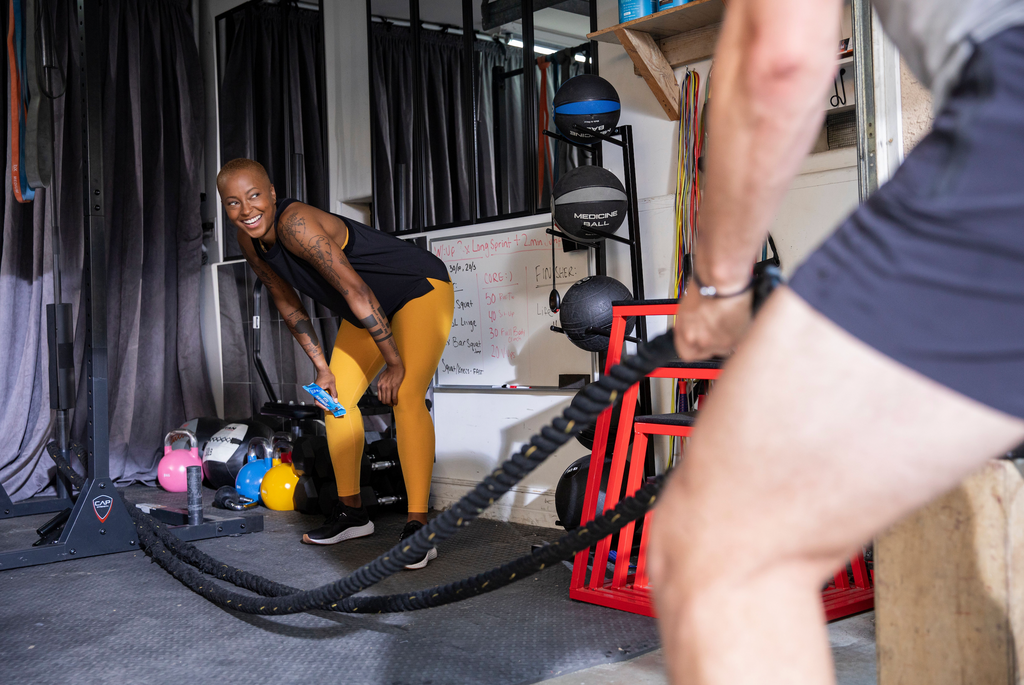
How do I start working out?
If you’re new to working out, there are plenty of home workouts you can do. You can find workouts on YouTube or download apps that provide basic exercises.
“Although, in many cases I've seen that this is not a substantial way for holding oneself accountable to stay consistent with their physical activity,” Fiedler says.
Instead, she recommends that if you are in place where you want to start working out and are comfortable heading to a gym, to research options in your area. Check out what they have to offer (like group fitness classes or personal training) and ask if there are any membership trial options to help you see that it’s the place you would like to commit to. You might have to try a couple gyms — if the first one doesn’t work out, don’t get discouraged.
How many times a week should a beginner work out?
There is no one cut and dried answer here, it depends on your goals and fitness level. “I don’t believe that there is a specific time or number of days in which you should work out,” she says.
Fiedler personally has a few new, in-person clients that train with her twice a week and she provides them with an additional session to do on their own to build autonomy. Everyone’s program set up will be determined by what their everyday activity and lifestyle are like. “If you don’t take these two options into account it’s like taking someone that's never performed an activity a day in their life and setting them up for six days a week, two-hour workouts. That will not end well,” Fiedler says.
Related Articles
How long should you work out as a beginner?
Again, workout length is also going to depend on many personal factors. Your workout duration is determined by what your goals are — regardless of being a beginner or advanced. Most sessions could be 60 minutes long, and others could be 30 minutes. It also comes down to how much of a beginner are you.
Some questions to ask yourself: Do you have a past history with playing sports in school? Do you make sure you're getting over 10,000 steps a day? Are you starting from living completely sedentary?
All of these factors will determine how you structure your workouts (and where a trainer can help). However, if you’re looking for some general guidelines to help get you started, Fiedler suggests starting out with a few workouts per week that are about 45 to 60 minutes long.
And, the World Health Organization (WHO) physical activity guidelines state you should do at least 150–300 minutes of moderate-intensity aerobic physical activity (like walking or cycling slower than 10 mph) or at least 75–150 minutes of vigorous-intensity aerobic physical activity (like running or jumping rope) throughout the week.
What is a good workout for a beginner?
Just because you’re a beginner doesn’t mean you should shy away from the gym!
Try this beginner workout for the gym created by Fiedler. (It can also be modified to be done at home.)
How to do it: Perform to to 12 reps of each move, taking 30 to 60 seconds of rest after each. Complete the circuit 3 times.
Elevated Lunge

Stand with the feet shoulder-width apart and hands by the sides of the body (you can do this with our without weights). Take a step forward with the right leg so your right foot lands on the elevated surface (such as a step or bench). Initiate the movement by bending the right knee and lowering the body down toward the floor. Pause when the right thigh is parallel to the floor, keeping toes over knees. Left knee should come to the ground. Pause, then slowly return to starting position. Repeat.
Incline Bench Row
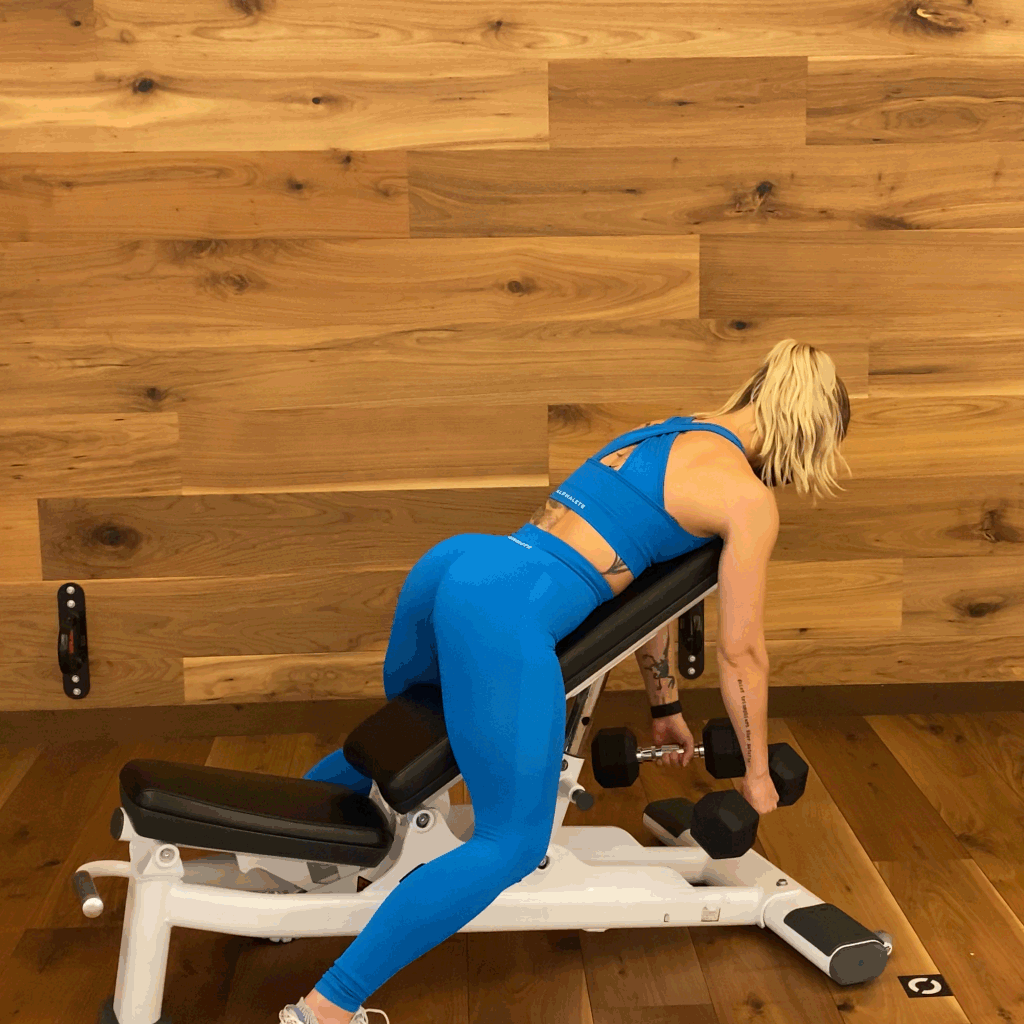 Start by setting an incline bench to 45 degrees, then grab one dumbbell in each hand. Sit on the bench facing it, with feet planted on the floor, arms at your sides palms facing in. Engage shoulder blades and drive elbows toward the ceiling, bringing weights to your chest. Keep glutes and core engaged, you don't want to actually rest on the bench. Pause at the top, then slowly return to starting position and repeat.
Start by setting an incline bench to 45 degrees, then grab one dumbbell in each hand. Sit on the bench facing it, with feet planted on the floor, arms at your sides palms facing in. Engage shoulder blades and drive elbows toward the ceiling, bringing weights to your chest. Keep glutes and core engaged, you don't want to actually rest on the bench. Pause at the top, then slowly return to starting position and repeat.
Kettlebell Deadlift
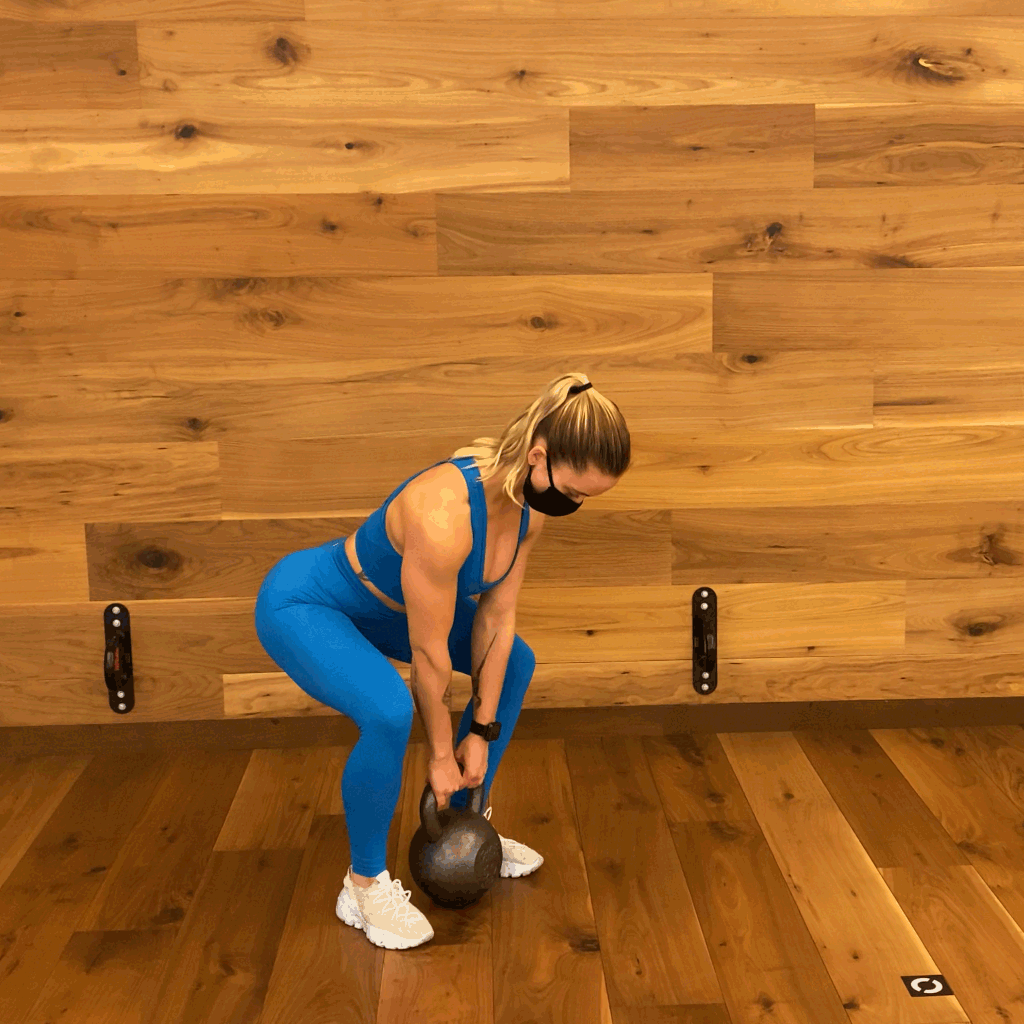
Stand with feet shoulder-width apart, maintaining a slight bend in your knees, with a kettlebell in front of you. Hinge forward at the hips, keeping your spine straight as you push your hips directly behind you. Grip the weight in both hands in a palms-down grip and squeeze the handle in both hands to maintain a firm grip. To lift the kettlebell, push your feet into the floor and press your hips forward while pulling your knees back, engaging hamstrings and adductors. Come up to a tall, standing position with the kettlebell resting on the fronts of your thighs at approximately waist height. Keep spine long as you hinge forward to perform each repetition, generating force to lift the kettlebell by moving the hips forward to engage glutes.
Dumbbell Bench Press
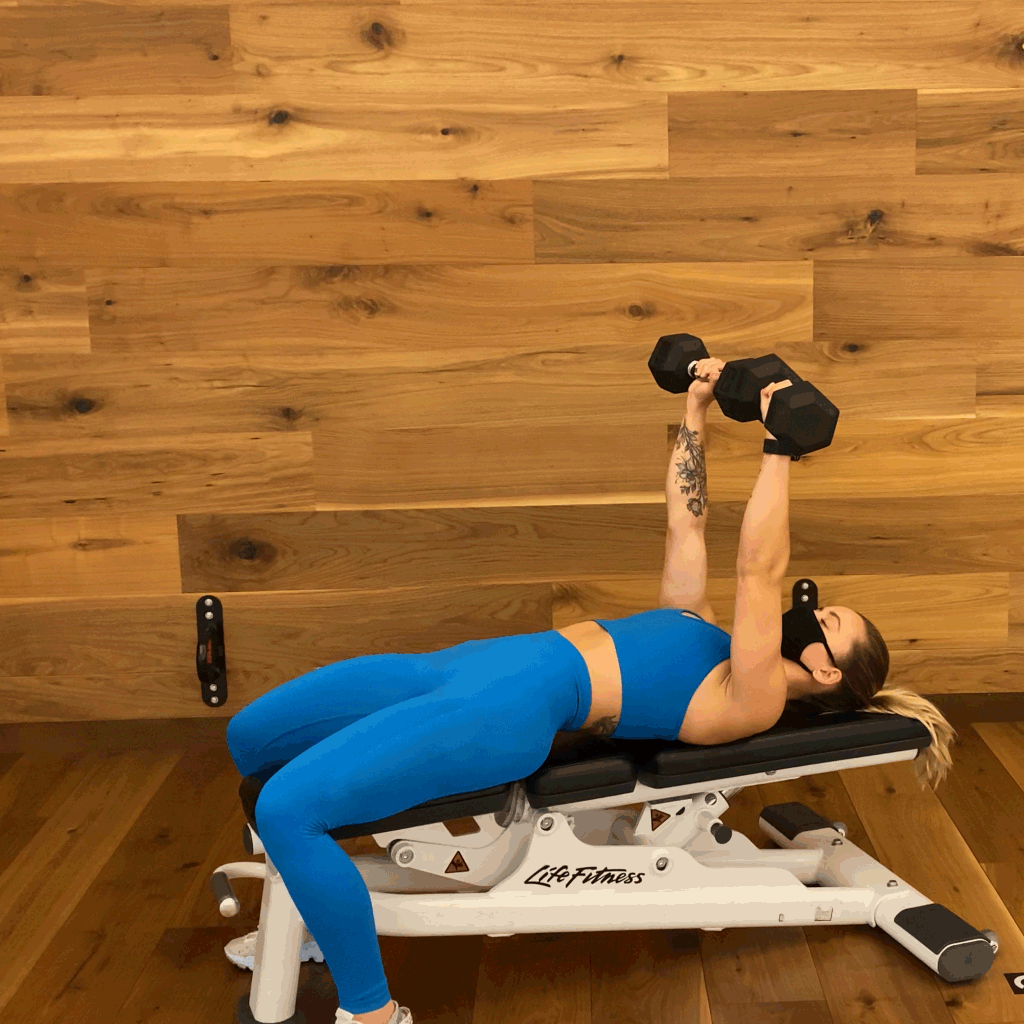
Lie faceup on a bench, holding one dumbbell in each hand with palms facing forward, thumbs wrapped around the handle, with dumbbells at mid-chest. Brace core and press the dumbbells to a position level with or just below your eyes with the elbows fully extended. Maintain a neutral wrist position. Slowly lower weights to starting position and repeat.
Seated Arnold Press

Start seated on an exercise bench with back support, holding one dumbbell in each hand at chest level with palms facing your body, arms bent at about 90-degrees, dumbbells almost touching. With core braced and back supported, rotate palms of hand until they are facing outward, then raise dumbbells until arms are extended above you. Pause, then slowly return to starting position. Repeat.
Kettlebell Squat

Stand with feet hips-width apart, holding kettlebell by the horn in the center of your chest. Initiate the movement by sending the hips back as if you're sitting back into a chair. Bend knees to lower down as far as possible with chest lifted in a controlled movement. Keep lower back neutral. Press through heels to stand back up to starting position. Repeat.
Pullover With Legs Elevated
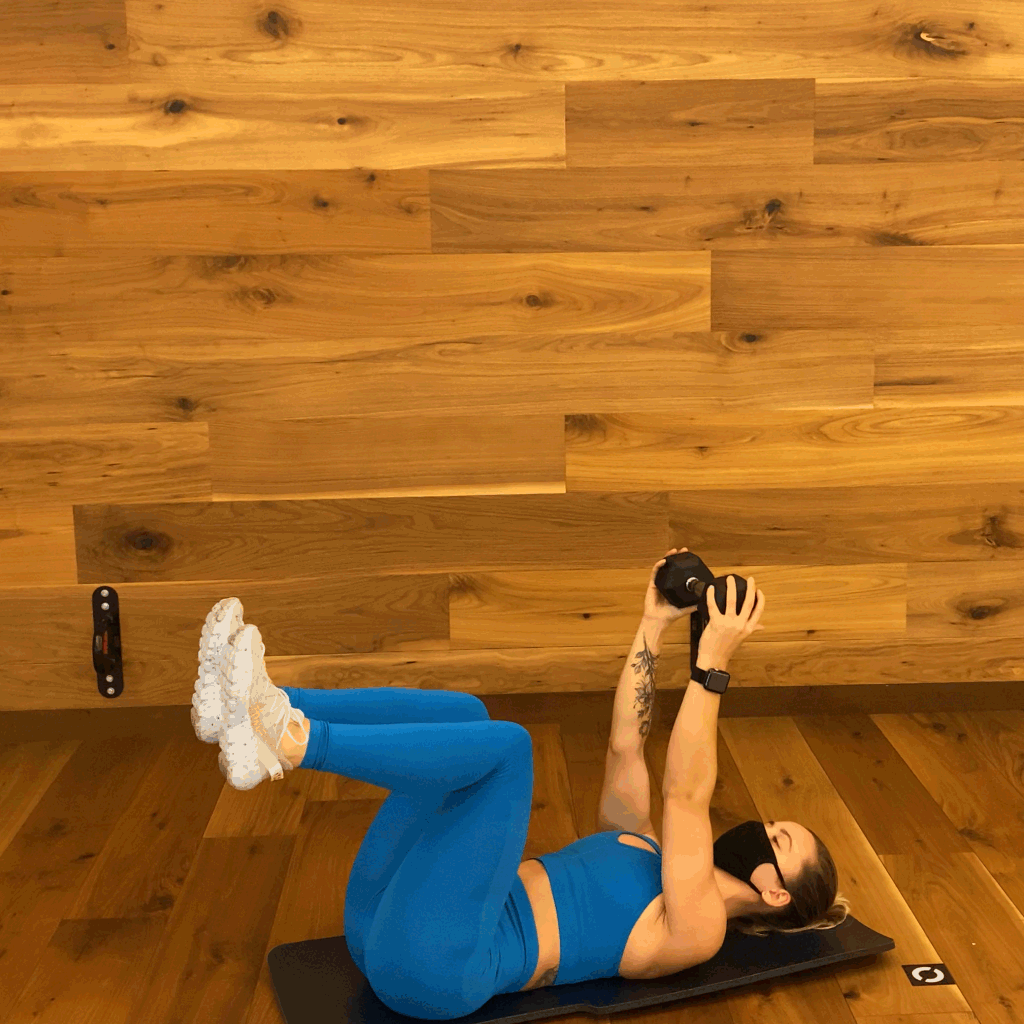
Lie faceup with knees and elbows bent, feet flexed. Hold a dumbbell or kettlebell in hands, with arms extended overhead. Engage core to crunch up and draw elbows to touch knees. Hold there, then slowly extend arms and weight out behind you. Pause, then return to starting position.
How Can Beginners Ensure Proper Form?
"This is where I would recommend reaching out to a trainer online or at your gym and go through an assessment where they can see what your form looks like and guide you in the right direction for proper form and to avoid future injuries," says Fiedler.
What is a good beginner workout?
A great beginner workout includes your main compound movements while adding in single arm and leg movements, plus some sort of core work. "Strengthening your core will help giving your spine support to reduce injury risk," Fiedler says.
Vital Note: This article has been made available for informational and educational purposes only. It is not intended to be a substitute for professional medical advice, diagnosis, or treatment. Always seek the advice of your physician or another qualified health provider with any questions you may have regarding a medical condition. Your licensed healthcare professional can best provide you with the diagnosis and treatment of any medical condition and assist you as well in deciding whether a dietary supplement will be a helpful addition to your regimen.













